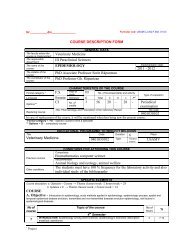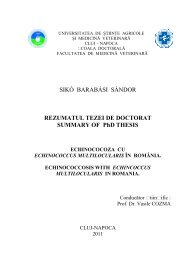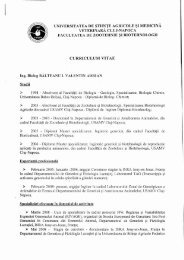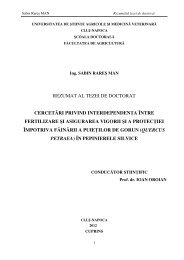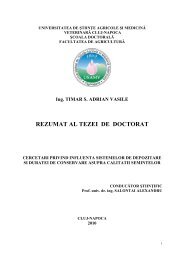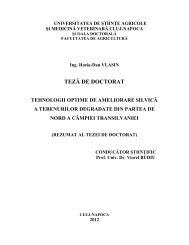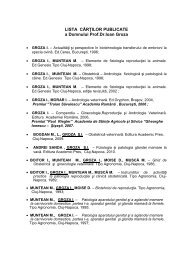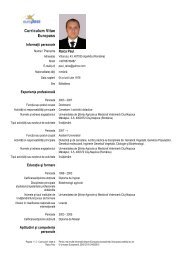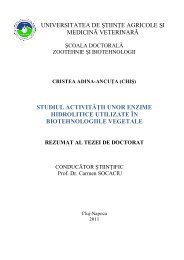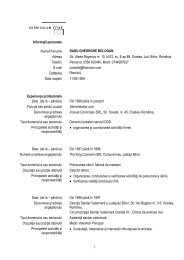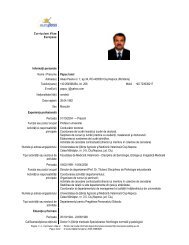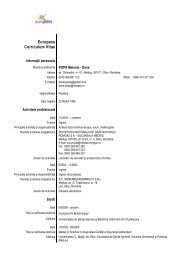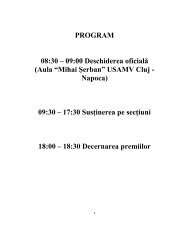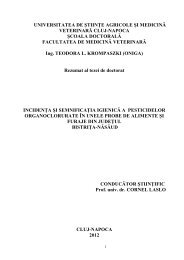Rezumatul tezei de doctorat - USAMV Cluj-Napoca
Rezumatul tezei de doctorat - USAMV Cluj-Napoca
Rezumatul tezei de doctorat - USAMV Cluj-Napoca
Create successful ePaper yourself
Turn your PDF publications into a flip-book with our unique Google optimized e-Paper software.
The specific literature presents updated preoccupations regarding the i<strong>de</strong>ntificationd<br />
and classification of different Saprolegnia species and subspecies, saprophytic and<br />
conditioned pathogenic at different fish species. This fact indicates that there is not sufficient<br />
the strain morphologic strict i<strong>de</strong>ntification, but there is nee<strong>de</strong>d a molecular additional<br />
characterization regarding DNA structure, which could permit a correct i<strong>de</strong>ntification and<br />
the establishing of genetic distances between Saprolegnia populations and subpopulations.<br />
This fact is necessary because the technological losses in fish industry, raported at<br />
international and national level, caused by saprolegniasis, which are affecting the fish<br />
<strong>de</strong>velopment from spawn, larva, alevin, young fish and adults, are reaching up to 50% from<br />
production, which has a negative impact on the fisheries economical and financial situation.<br />
Starting from those consi<strong>de</strong>rations, by the research hypothesis we proposed the<br />
morphologic and molecular i<strong>de</strong>ntification and <strong>de</strong>scription, using DNA samples, of<br />
Saprolegnia species and subspecies, which are affecting carp species populations from<br />
centern and north-western romanian fisheries. In Romania there haven’t been ma<strong>de</strong> any<br />
genetic studies on Saprolegnia species and subspecies, which affect carp species, and which<br />
could be the starting point in the future for DNA vaccination technology, at reproduction<br />
individuals. The study of Saprolegnia local isolates will have an obvious contribution at the<br />
<strong>de</strong>velopment of the disease control strategies.<br />
The research objectives were the following:<br />
1. The establishing of experimental plan and protocole;<br />
2. The optimization of Saprolegnia culture methods;<br />
3. The optimization of Saprolegnia DNA extraction and amplification methods;<br />
4. The testing of different restriction enzymes using PCR-RFLP technique;<br />
5. The establishing of genetic distances between i<strong>de</strong>ntified species from Saprolegniaceae<br />
family;<br />
6. The monitor of saprolegniasis inci<strong>de</strong>nce at carp species from centern and northwestern<br />
part of Romania.<br />
45



